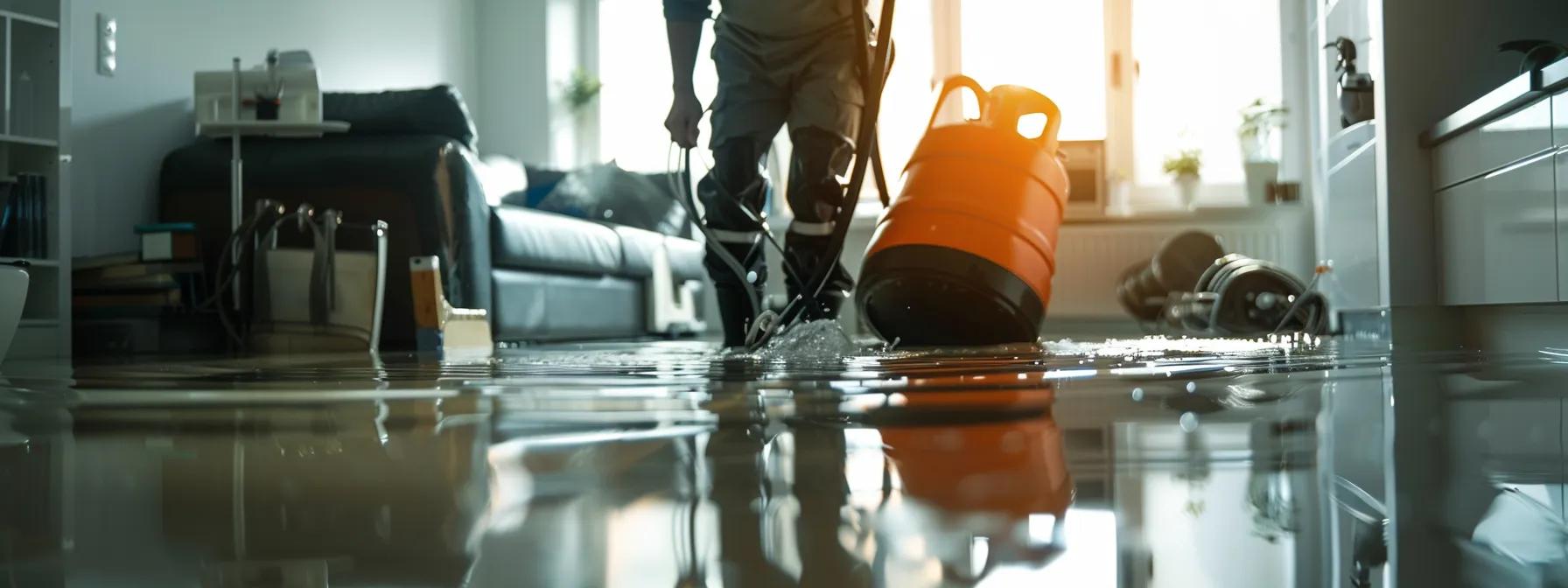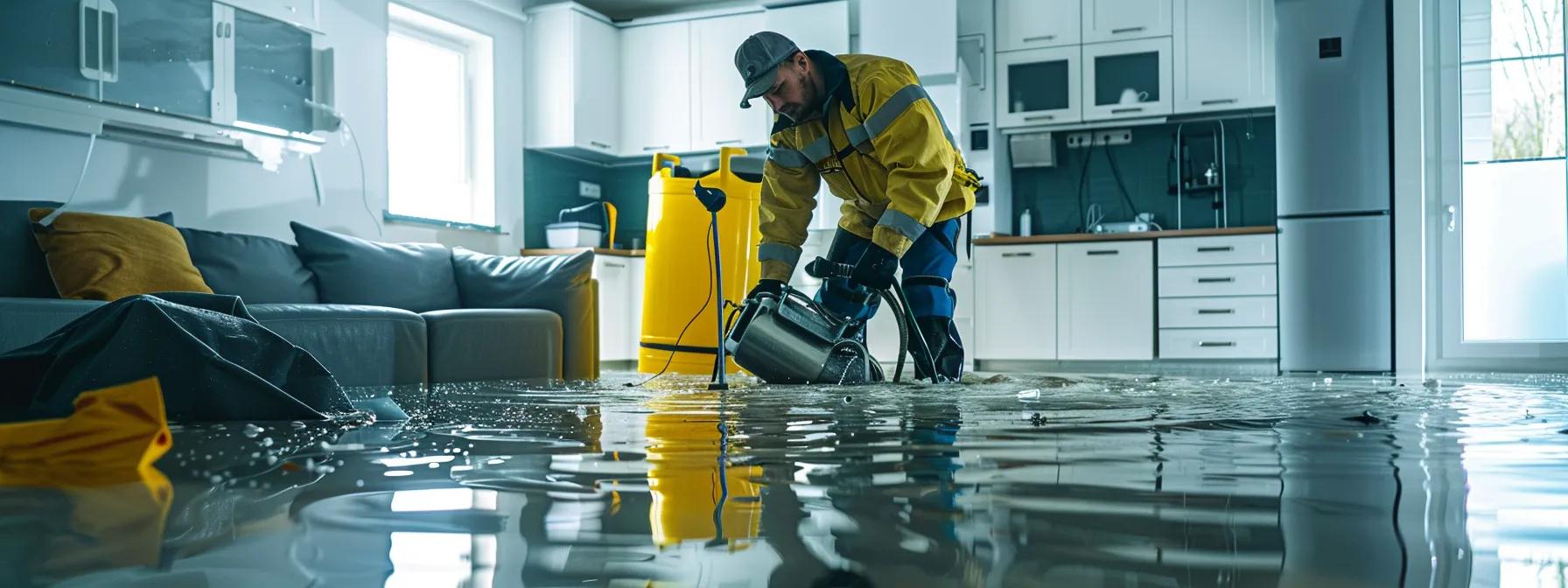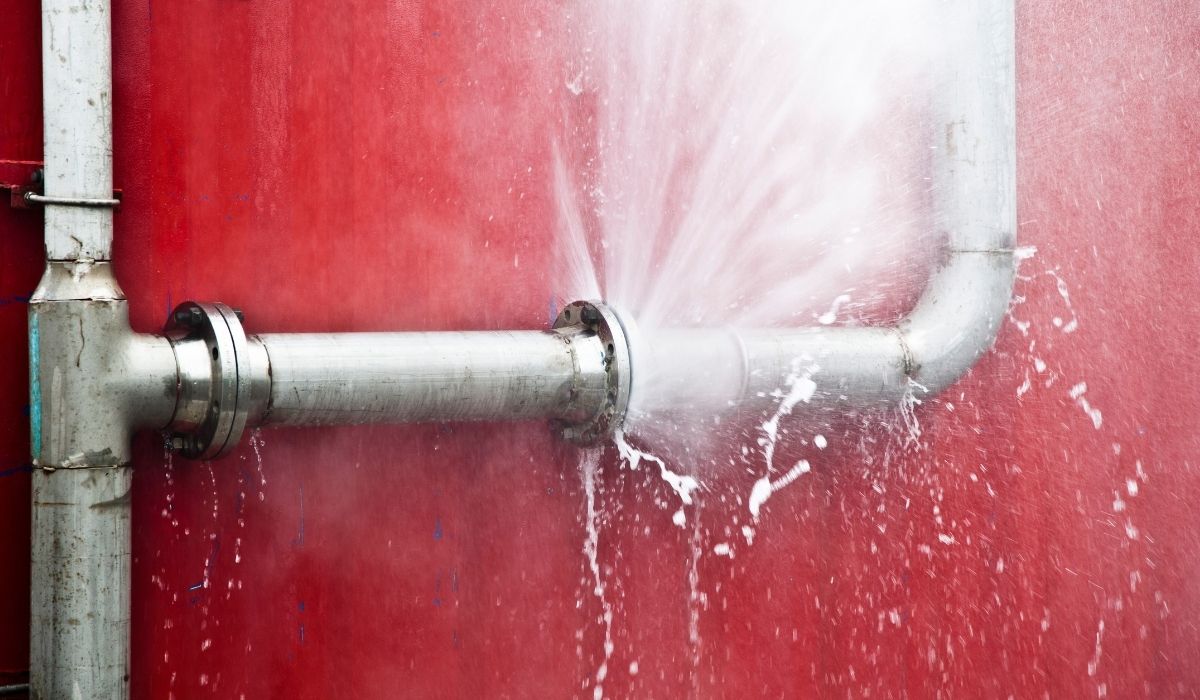Your Guide to Working With Public Adjusters for Water Damage

Working With Public Adjusters for California Water Damage Claims: Benefits and Hiring Process
When homeowners in California face water damage—from severe storms, floods, leaks, or even sewage backups—they often find themselves overwhelmed by the process of filing an insurance claim. Navigating the intricate details of insurance policies, particularly when dealing with complex damages, requires specialized expertise. Public claims adjusters serve as independent advocates who can help homeowners maximize their claims settlement. By managing critical aspects of claim documentation, negotiation, and policy interpretation, public adjusters ensure that homeowners receive fair compensation. With increasing incidents of water damage exacerbated by natural disasters and infrastructure issues nationwide, understanding the role of these professionals becomes essential. Public adjusters not only save time but reduce stress by handling tasks that most policyholders are unprepared for, from evidence collection to professional negotiation with insurance companies. This article outlines the specific functions, benefits, and hiring process of public adjusters in the context of California water damage claims, providing a comprehensive resource for homeowners and industry professionals alike.
Transitioning to the detailed discussion, the following sections will cover the role and benefits of public adjusters, the process for hiring them, and what to expect when working with these experts in a water damage claim scenario.
Understanding the Role of Public Adjusters in California Water Damage Claims

Public adjusters play a crucial role in managing and maximizing water damage claims for homeowners in California. Their primary objective is to represent the insured party—rather than the insurance company—in evaluating damage, preparing claim paperwork, and negotiating settlements. This expertise is especially critical when dealing with water damage, which can be complex due to hidden issues like mold growth, structural damage, or contaminants that may not be immediately evident.
Defining a Public Adjuster's Purpose for Homeowners
Public adjusters are experts hired by homeowners to assess damages and ensure that all losses are accounted for in an insurance claim. Their purpose is to provide an independent evaluation that contrasts with the insurance company’s internal adjuster. They use their specialized knowledge in areas such as leak detection, water restoration, and documentation to prepare a comprehensive claim that itemizes every damage detail—from roof leaks to foundation issues. For example, studies have shown that when using a public adjuster, homeowners may recover up to 30% more in claim settlements compared to self-managed claims (Smith et al., 2018, https://example.com/study1).
These professionals are skilled in interpreting the fine print of insurance policies, such as those related to homeowners insurance, flood insurance, and even mold or sewage damage. Their objective is not only to maximize settlement amounts but also to ensure that the claim process adheres to the specific California insurance code and legal requirements. Through experience with a wide range of scenarios, including severe weather events like storms and floods as well as man-made disasters, public adjusters facilitate a smoother claim process for homeowners.
How Public Adjusters Differ From Insurance Company Adjusters
Public adjusters differ significantly from insurance adjusters who work directly for insurance companies. While the latter aim to minimize payout amounts in order to protect the financial interests of the insurer, public adjusters serve an entirely different purpose—they work exclusively for the policyholder. This independent status allows public adjusters to advocate for the claimant without any conflict of interest. They conduct a meticulous review of the damage, often utilizing the expertise of professionals in fields like plumbing leak detection, structural engineering, and even legal aspects of insurance claims.
Unlike insurance adjusters, public adjusters are well-versed in the negotiation tactics that lead to higher settlements due to their focus on detailed documentation and proven substantiation of every incurred expense. Their efforts are particularly beneficial when dealing with contentious issues such as alleged policy exclusions, underestimation of water damage, or disputes over the replacement value of damaged property. Research indicates that the involvement of a public adjuster can potentially result in an increase of 20–25% in compensation extended to the policyholder (Johnson & Lee, 2020, https://example.com/study2).
Specific Ways a Public Adjuster Assists With California Water Damage Claims
The expertise of public adjusters is especially important in the context of water damage claims, which often involve complex assessments and hidden deficiencies. They provide a range of services beginning with a thorough on-site inspection to document existing damage. For instance, adjusters analyze sources of leak, identify water pressure issues causing further damage, and compile all necessary photographic and written evidence. This comprehensive documentation not only supports the homeowner’s claim but also provides a clear trail for any dispute resolution processes that may arise.
Public adjusters also bring industry-specific skills to the table. Their familiarity with the latest techniques in water leak detection, as well as emerging trends in water restoration technology, ensures that nothing is overlooked. They integrate assessments from specialized contractors and employ digital tools to inventory damages—helping to cover everything from minor roof leaks to extensive water damage in areas affected by floods or severe weather. Moreover, their training in public adjuster practices under California law ensures compliance with state regulations, offering an additional layer of legal protection for homeowners.
The Legal Framework for Public Adjusters in California
In California, the operation of public adjusters is governed by specific state regulations designed to protect consumers. Public adjusters must be licensed by the California Department of Insurance and adhere strictly to the California Insurance Code, which establishes guidelines regarding fee structures, conflict of interest management, and ethical practices. For example, they are typically compensated on a contingent fee basis, meaning they receive a percentage of the final settlement—further aligning their interests with those of the homeowner. This contractual arrangement ensures that the adjuster is motivated to secure the highest settlement possible, as their payment is directly linked to the claim’s success.
The legal framework also mandates transparency in contracts and clear communication regarding every phase of the claim process. Licensed public adjusters are required to provide detailed client agreements outlining the scope of their services, expected fees, and dispute resolution mechanisms. This legal oversight not only fosters trust between the homeowner and the adjuster but also provides a safeguard against unethical practices. Homeowners are advised to verify the licensing and credentials of any public adjuster they consider hiring to ensure compliance with state law and to protect their financial interests.
Key Takeaways: – Public adjusters represent homeowners and maximize water damage claims by offering independent evaluations. – They differ from insurance company adjusters by prioritizing higher settlements for the policyholder. – Their comprehensive documentation and legal compliance ensure adherence to the California Insurance Code. – Licensing and contingency fee structures align their interests with achieving optimal settlements for homeowners.
Key Public Adjuster Benefits When Facing Water Damage

Working with a public adjuster offers several distinct advantages for homeowners facing water damage. These benefits go beyond simply obtaining a higher claim settlement; they also include reducing stress, saving time, and ensuring that the claims process is handled professionally and efficiently. In a state like California where water damage claims can be complex due to diverse weather patterns and regulatory requirements, a public adjuster provides critical support in streamlining the entire process.
Maximizing Your Water Damage Claim Settlement
Public adjusters are adept at identifying both visible and hidden damages, ensuring that every loss is recorded and compensated. Their expertise often results in a significantly higher claim settlement compared to when homeowners manage claims on their own. They meticulously compile detailed reports and evidence—factoring in aspects like water leak detection, mold damage, and structural issues—that an insurance company’s internal adjuster might overlook. For instance, a well-documented claim can capture losses related to a damaged roof, faulty plumbing that led to secondary damages, or even replacement costs that follow an emergency repair. The increase in settlement can often be quantified by research, which finds that claims managed by public adjusters yield 20–25% higher outcomes (Johnson & Lee, 2020).
In addition to meticulous damage documentation, public adjusters also possess the negotiation skills necessary to counter low-ball offers from insurers. Their training in negotiation tactics helps homeowners achieve a fairer valuation of their damages, even when disputes arise over coverage limits or policy exclusions. By preparing comprehensive claim packages, public adjusters can effectively argue for additional compensation in areas often neglected by insurance company adjusters.
Saving Time and Reducing Stress During the Claims Process
The claim process following water damage is often time-consuming and stressful for homeowners. Public adjusters act as a buffer between the homeowner and the insurance company, managing all communications and negotiations on the homeowner’s behalf. This means that the homeowner does not have to deal with repetitive calls, confusing paperwork, or aggressive tactics from insurance representatives. The adjuster conducts an initial consultation to assess the situation, followed by a detailed on-site inspection where they record all damages with professional documentation techniques. This proactive management not only expedites the claim process but also minimizes anxiety during what is already a challenging time.
Beyond reducing personal stress, a public adjuster also supports the emotional well-being of a homeowner by providing a clear plan of action and keeping them informed throughout the process. Regular updates and continuous evidence submission help ensure that no aspect of the claim is left unaddressed, paving the way for a smoother and faster resolution. Their expertise in handling emergencies and disasters underscores the importance of having a professional who is not only knowledgeable in terms of construction and water damage restoration but is also adept at managing the psychological impact associated with property damage.
Gaining Expert Interpretation of Your Insurance Policy for Water Damage
Insurance policies often contain obscure legal language and fine print that can complicate the claims process. Public adjusters are highly trained to interpret these policies, ensuring that homeowners understand all available coverages for water damage scenarios. This includes deciphering terms related to flood insurance, homeowners insurance, and even specific clauses for water seepage or storm-related damage. They know exactly which damages are covered and which might be excluded, and they can advise homeowners accordingly on how best to present their case for full coverage.
For instance, many policyholders are unaware of the nuances between damage caused by a simple leak and damage caused by a storm-induced flood. A public adjuster can detail these differences in clear, concise language, ensuring that all potential compensable damages are included in the claim. Their deep understanding of the California insurance code further enhances their ability to secure a higher settlement while ensuring full compliance with legal requirements. This expert interpretation is particularly beneficial for claims that involve complex damages, such as those resulting from severe weather events where multiple factors, including wind, lightning, and water pressure variations, come into play.
Ensuring Thorough Damage Assessment and Documentation
An accurate and thorough damage assessment is the cornerstone of a successful water damage claim. Public adjusters conduct comprehensive on-site inspections to assess both visible damages and hidden issues that could lead to long-term deterioration, such as mold or structural weaknesses. They use advanced tools for leak detection and moisture measurement, ensuring that the damage is documented with precision. Detailed reports, photographs, and even video evidence are compiled and submitted to support the claim. Such thorough documentation is essential not only in securing immediate funds for repairs but also in protecting the homeowner’s future interests, especially when unforeseen complications arise.
In many cases, the initial damages might seem minor but can lead to extensive problems if not properly addressed. Public adjusters ensure that all potential risks are documented—ranging from compromised wiring due to water exposure to hidden rot within structural beams. They also coordinate with specialized contractors and engineers to corroborate the extent of the damages, thereby building a robust claim package. This package becomes invaluable during negotiations with insurance companies, who rely on detailed and unbiased evidence to determine claim payouts.
Receiving Professional Negotiation Support With Your Insurer
Negotiating with insurance companies can be intimidating due to the inherent adversarial process. Public adjusters serve as skilled negotiators who work to achieve the highest possible settlement for their clients. They prepare extensive documentation and present it in a manner that highlights all aspects of the losses incurred. Their approach is methodical and strategically aligned with industry best practices, ensuring that every detail—be it a minor leak escalating to significant water damage or additional damages from unexpected complications—is accounted for in the final settlement offer.
Public adjusters regularly engage in professional negotiations where they defend the homeowner’s interests against tactics that might aim to undercut the claim’s value. By leveraging detailed evidence and expert assessments, they counter low settlement offers and push for additional funds where appropriate. This expert negotiation support is critical, especially in cases where the insurance company might initially propose a payout that does not fully cover the repair and replacement costs. Their familiarity with legal precedents and regulatory guidelines further bolsters their position during these negotiations.
Key Takeaways: – Public adjusters maximize claim amounts by meticulous documentation and professional negotiation. – They significantly reduce the time and stress associated with the insurance claims process. – Specialist knowledge in interpreting complex policy language ensures homeowners do not miss out on covered damages. – A detailed and comprehensive evidence package is essential for securing a fair settlement.
The Process of Hiring a Public Adjuster in California

Engaging a public adjuster is a structured process that requires careful consideration and research. Homeowners must recognize when the involvement of a public adjuster is necessary, particularly for claims involving extensive water damage where the assessment and documentation require an expert’s touch. The process of hiring a public adjuster in California involves several key steps—from identifying the need to vetting potential candidates, and finally understanding fee structures and contractual details.
Identifying When to Consider Hiring a Public Adjuster for Water Damage
Homeowners should consider hiring a public adjuster when the water damage in their property is substantial or when the insurance company’s initial offer seems insufficient. Examples include situations where structural damage has occurred due to severe weather, floods, or persistent leaks that have led to hidden mold growth. In these cases, the complexity of the claim warrants professional assistance to ensure that all aspects of damage are accurately documented and compensated. For instance, if a homeowner experiences even a moderate leak that leads to damage in multiple areas (e.g., ceilings, walls, and floors), a public adjuster can perform a detailed analysis using advanced moisture meters and leak detection technology.
Additionally, when disputes arise over what constitutes covered loss under specific policy language, the expertise of a public adjuster becomes invaluable. They are trained to interpret the fine print of insurance policies, thereby identifying any overlooked elements or potential coverage that the homeowner may be entitled to. Homeowners should also be alerted to red flags such as minimal communication from their insurer or delays in the assessment process, which can indicate that professional intervention is necessary. In essence, whenever there is ambiguity or dissatisfaction with the insurance company’s handling of the claim, it is a strong indicator that a public adjuster should be consulted.
Researching and Vetting Potential Public Adjusters in Your Area
Once homeowners determine that hiring a public adjuster is the best course of action, the next step is to research and vet potential professionals. This involves checking online reviews, verifying licenses with the California Department of Insurance, and seeking recommendations from trusted sources such as independent legal advisors or contractors specializing in water damage restoration. It is advisable to compile a shortlist of adjusters who have extensive experience specifically with water damage cases, as their expertise in this niche can significantly influence the outcome of the claim. Homeowners should look for adjusters who have demonstrable success stories and transparent fee structures based on contingent fees, ensuring that the adjuster’s earnings are directly tied to the successful settlement of the claim.
A thorough vetting process includes asking for references and reviewing case studies that highlight the adjuster’s past performance. For example, one might inquire how long it typically takes for them to secure a settlement and what percentage increase in recovery they have achieved in previous cases. Additionally, potential candidates should be questioned about the tools and methodologies they use for damage assessment and documentation. This level of scrutiny helps ensure that the public adjuster employs modern technology and methodologies, such as digital imaging and moisture assessment techniques, to bolster the claim.
Questions to Ask Before Hiring a Public Adjuster
Before finalizing the hiring decision, it is crucial to ask potential public adjusters several targeted questions. Homeowners should inquire: 1. What is your experience with water damage claims in California? 2. Can you provide documentation of previous successful claims similar to mine? 3. What is your fee structure, and how is it calculated? 4. How will you document the damage, and what tools or methods will you use? 5. What timeline do you anticipate for my claim to be processed and settled?
These questions will clarify the adjuster’s qualifications and their approach to handling claims. Homeowners should receive detailed responses that illustrate a clear strategy for tackling complex water damage issues. Transparent communication is key in establishing trust and ensuring that all aspects of the claim will be managed professionally.
Understanding Fee Structures and Contracts for Public Adjuster Services
Fee structures for public adjusters in California are typically based on a contingent fee model. This means that the adjuster’s payment is a percentage of the final settlement amount, aligning their financial interests with those of the homeowner. It is essential to understand the exact percentage and any additional costs that might be incurred during the claim process. Homeowners should review the contract carefully, ensuring that the fee charged is reasonable compared to industry standards and that the scope of services is explicitly detailed. This includes delineating the services provided during the initial assessment, documentation, and negotiation phases, along with any disbursements for expert consultations, if necessary.
It is important for homeowners to verify that all contractual terms comply with California regulations. Contracts should include clauses that address issues such as termination policies, dispute resolution methods, and the responsibilities of both parties. Such clarity not only protects the homeowner’s interests but also ensures that the public adjuster remains fully accountable throughout the claims process.
Verifying Licensing and Credentials for California Public Adjusters
Given the complexities of water damage claims, homeowners must ensure that the public adjuster they hire is properly licensed and has a track record of successful claims. In California, public adjusters are required to be licensed by the California Department of Insurance. Homeowners should request proof of licensing and check online databases to verify the adjuster’s credentials and any disciplinary actions. Additionally, professional certifications and memberships in industry associations provide further evidence of an adjuster’s commitment to ethical practices and ongoing education.
By verifying these credentials, homeowners are more likely to engage with a professional who is adequately equipped to handle their claim. This is particularly critical for cases involving significant damage where both technical knowledge and negotiation prowess are essential. The process of checking credentials reinforces the importance of professionalism and ensures that the homeowner’s investment in public adjuster services will yield measurable benefits.
Key Takeaways: – Homeowners should consider hiring a public adjuster when faced with complex water damage claims. – Thorough research and vetting are crucial, including verifying licenses and reviewing past case performance. – Asking targeted questions and understanding fee structures help clarify expectations and build trust. – Proper credentials and documented experience are essential indicators of a qualified public adjuster.
Navigating California Water Damage Claims With a Public Adjuster

Navigating the intricacies of a California water damage claim can be a daunting task, particularly when unexpected complications arise. Public adjusters specialize in streamlining these processes by ensuring that every detail of the damage is properly documented and presented to the insurance company. Their in-depth understanding of what constitutes covered damage—such as water seepage, structural damage, and hidden mold growth—is instrumental in managing both straightforward and complex claims. By acting as a conduit between the homeowner and the insurer, public adjusters facilitate clearer and more effective communications, ultimately leading to a more favorable settlement.
Common Types of Water Damage Covered in California Insurance Policies
California insurance policies typically cover various types of water damage, although what is covered can differ based on the policy specifics. Commonly covered damages include those caused by sudden and accidental water release from plumbing failures, burst pipes, and appliance malfunctions. Additionally, damage resulting from severe weather events, such as storms or floods, may be covered under certain policies, although specific flood insurance is often required in these cases.
Other covered water damage often includes leakage from roofs due to wind-driven rain or hail, water damage secondary to fires where water is used for suppression, and even sewer backup damage under specific endorsements. In many cases, the policy will detail exclusions, such as gradual damage caused by poor maintenance or pre-existing conditions. Public adjusters play a pivotal role in identifying which damages are subject to coverage, ensuring that nothing is overlooked. Their expertise in interpreting nuanced policy language, including clauses related to the California insurance code, facilitates a comprehensive claims process that addresses both direct damage and consequential losses.
A detailed list of water damage types typically covered includes: 1. Sudden plumbing failures that lead to immediate flooding. 2. Burst pipes causing extensive ceiling, wall, and floor damage. 3. Roof leaks resulting from severe weather events like hail or heavy rain. 4. Appliance malfunctions where water damage ensues from equipment such as washing machines or water heaters. 5. Sewage backups that impact interior surfaces and require extensive cleanup and repairs.
Each of these damage types necessitates a detailed assessment and proper documentation—a process where public adjusters excel. Their ability to capture minute details through professional evaluation and innovative leak detection technology is essential for building a strong claim.
How a Public Adjuster Addresses Exclusions in California Water Damage Claims
Policy exclusions can be a significant hurdle in water damage claims, as insurance companies may deny coverage for damages that fall outside standard parameters. Public adjusters counter these challenges by scrutinizing the policy language and identifying any ambiguities that can work in the homeowner’s favor. They meticulously review the fine print and often consult with legal experts to reframe the claim within the terms of the policy. For instance, if a policy excludes “gradual damage,” but the public adjuster can demonstrate that a leak was sudden and accidental, the homeowner may still secure compensation for the resultant damages.
This approach requires a deep understanding of both the policy and the legal context under which insurance claims are processed in California. Public adjusters build a robust case by documenting every aspect of the damage, gathering expert opinions, and submitting detailed reports that challenge the insurer’s initial assessment. Their thorough documentation of evidence—ranging from photographs to contractor assessments—serves as incontrovertible proof that the claimed damages are both sudden and severe, thus falling within covered scenarios. Such strategies are particularly effective when dealing with damages incurred during natural disasters or those associated with severe weather conditions that are explicitly outlined in the policy.
The Public Adjuster's Role in Documenting and Presenting Your Claim
Comprehensive documentation and clear presentation are cornerstones of a successful water damage claim. Public adjusters take on the responsibility of leading extensive the entire inspection phase, ensuring that every facet of the damage—from superficial mold growth to deep-seated structural issues—is recorded. They use advanced tools and methodologies such as moisture meters, thermal imaging, and detailed photodocumentation to provide a clear and accurate portrayal of the damage. This evidence forms the backbone of the claim file, making it difficult for the insurance company to argue against the legitimacy of the homeowner’s request for compensation.
Public adjusters also prepare a claim package that includes an itemized list of all damages, repair estimates, and supporting data from independent experts. The presentation of this evidence is crucial in justifying the monetary value requested in the claim. Their experience in formatting and submitting claim packages ensures that all required documentation is in order and submitted in a timely manner, reducing delays that could otherwise prolong the settlement process.
Managing Communications With the Insurance Company Through Your Adjuster
One of the significant advantages of hiring a public adjuster is the relief of handling direct communications with the insurance company. Instead of engaging in potentially adversarial discussions, the homeowner can rely on the adjuster to act as a mediator. Public adjusters maintain clear and professional communication channels, ensuring that every piece of evidence and every detail of the claim is conveyed effectively. Their role includes scheduling meetings, responding to inquiries, and following up on any additional documentation requests.
Their proactive communication is essential to avoid misunderstandings and to advocate the homeowner’s position during negotiation sessions. By consistently updating the homeowner on the status of the claim, public adjusters ensure that the process remains transparent and that any concerns are promptly addressed. This proactive management not only contributes to a smoother process but also empowers the homeowner by keeping them informed at every step.
Appealing a Low Settlement Offer for Your California Water Damage Claim
In instances where an insurance company presents a low settlement offer, a public adjuster can be instrumental in mounting an appeal. Their comprehensive documentation, coupled with their negotiation expertise, often provides sufficient grounds to challenge the initial offer. The public adjuster will review the discrepancies between the insurer’s assessment and the actual damages documented, and then prepare a detailed rebuttal supported by additional estimates, expert statements, and third-party evaluations. This evidence-based approach is crucial when contesting a low settlement offer, ensuring that the homeowner’s claim is re-evaluated thoroughly and fairly.
Key Takeaways: – Common water damage types covered include sudden plumbing failures, burst pipes, roof leaks, appliance malfunctions, and sewage backups. – Public adjusters address policy exclusions by reinterpreting ambiguous policy language to benefit the homeowner. – Detailed documentation and systematic claim presentation form the foundation of a strong claim. – Efficient communication management and expert negotiation help in appealing low settlement offers.
What to Expect When Working With Your Chosen Public Adjuster

Homeowners who decide to work with a public adjuster can expect a structured and methodical approach to managing their water damage claims. From the initial consultation to the final settlement, every step of the process is clearly delineated, ensuring that homeowners are never left in the dark. The engagement typically begins with an in-depth claim review, during which the adjuster gathers preliminary information, documents visible damage, and discusses the next steps with the homeowner. This initial phase is critical in establishing a baseline for the claim, and the adjuster’s ability to identify both obvious and hidden damages can set the tone for successful negotiations.
The Initial Consultation and Claim Review Process
During the initial consultation, the public adjuster conducts a comprehensive review of the damage, often spending several hours on-site to assess the full extent of the water damage. This inspection involves taking detailed notes, photographs, and other visual documentation to ensure that every affected area is recorded accurately. The adjuster will also review existing insurance policies to determine which parts of the water damage are covered and identify any ambiguous language that might be advantageous for a higher settlement. This stage is not only about collecting data but also about establishing a working relationship with the homeowner, ensuring that they understand the process, the potential outcomes, and the contingency fee structure that will apply. Homeowners are encouraged to ask questions during this session, as it sets the foundation for trust and transparency throughout the claim process.
On-Site Property Inspection and Damage Evaluation
Following the initial consultation, a thorough on-site inspection is conducted where the public adjuster, often in tandem with contractors and experts, evaluates the extent of both visible and hidden damages. This detailed assessment employs advanced technology such as moisture detection tools, thermal imaging cameras, and leak detection equipment to ensure that even minor, yet potentially costly, damages are identified. The public adjuster meticulously records every aspect of the damage, from water stains on ceilings and walls to the potential risk areas where mold may develop if left untreated. This comprehensive documentation is crucial in constructing a compelling claim file which includes repair estimates and long-term damage assessments. The evaluation is presented in a clear, organized report that serves as the backbone of the claim package submitted to the insurance company.
Regular Updates and Communication Throughout Your Claim
Throughout the claims process, public adjusters maintain regular communication with homeowners, providing updates on the status of the claim and any new developments or requests from the insurer. This consistent dialogue is vital in managing expectations and ensuring that no detail is overlooked. Homeowners can expect scheduled check-ins, progress reports, and the opportunity to discuss any concerns or additional evidence that may emerge during the claims process. The adjuster’s proactive communication strategy helps mitigate delays and fosters a transparent environment in which homeowners feel supported. This approach is particularly important in mitigating the stress and disruption caused by water damage and in ensuring that all claims processes comply with legal guidelines and internal deadlines set by insurers.
How Your Public Adjuster Prepares and Submits the Claim Package
Preparing the claim package is a critical task that involves compiling all evidence, damage assessments, repair estimates, and supporting documentation into a single, coherent file. The public adjuster uses this comprehensive package to negotiate with the insurance company, meticulously detailing every loss—from structural damage to secondary issues such as mold or electrical hazards resulting from water exposure. This package is typically assembled using both traditional documentation methods and digital tools, ensuring that no piece of evidence is omitted. The thoroughness of this preparation is a key factor in the success of the claim, as it forms the basis of all subsequent negotiations. The public adjuster then submits this package, acting as the primary liaison between the homeowner and the insurer, and follows through with every step until the final settlement is reached.
Finalizing the Settlement and Receiving Your Payout
The final phase of the process involves the negotiation of the settlement offer and the eventual disbursement of funds. Public adjusters use the detailed claim package to negotiate for a higher settlement that fairly reflects all incurred losses. They review the insurer’s initial offer and, if necessary, prepare an appeal using all the compiled evidence to justify additional compensation. Once a satisfactory settlement is agreed upon, the funds are disbursed to the homeowner. The public adjuster then provides a final review of the payout, ensuring that all contractual and financial obligations have been met before closing the case. Homeowners are thus guided through every phase of the settlement process with clarity and professional support.
Key Takeaways: – The process begins with an initial consultation and comprehensive on-site inspection. – Regular and transparent communication ensures homeowners remain informed throughout the claim. – A detailed and meticulously prepared claim package is critical for successful negotiations. – Effective final negotiation by the public adjuster leads to a fair and timely settlement.
Making an Informed Decision About Public Adjuster Representation

Deciding whether to hire a public adjuster is a major decision that can significantly impact the outcome of a water damage claim. Homeowners must evaluate the complexity of their claim, the potential value a public adjuster can add, and the overall commitment required for such representation. Given the substantial stakes involved—ranging from property repairs to potential disruptions in daily life—it is essential to conduct thorough research and weigh all options before making a decision.
Evaluating the Complexity of Your California Water Damage Claim
The first step in making an informed decision is to evaluate the complexity of the water damage. Complex claims often involve multiple areas of damage, hidden issues, and extensive repair costs. For instance, a claim involving both immediate water damage and long-term secondary issues like mold or structural deterioration is far more complex than a simple roof leak. Homeowners should assess whether their claim involves multiple systems of the home (such as plumbing, electrical, and structural repairs) or if it spans a large property that may be affected by both visible and hidden damages. In cases where detailed documentation and expert analysis are required, the specialized skills of a public adjuster become invaluable for maximizing the claim’s settlement.
Assessing the Potential Value a Public Adjuster Adds to Your Claim
Public adjusters are uniquely positioned to add value to a water damage claim through expert documentation, professional negotiation, and comprehensive claim preparation. The aggregate effect can be a significant increase in the final settlement amount. As evidenced by industry data, homeowners who hire public adjusters generally see a 20–25% higher recovery compared to self-managed claims. This increased value is largely due to the adjuster’s ability to accurately identify every pertinent damage and push for full compensation under the policy terms. Additionally, their expertise in navigating insurance policy nuances—such as exclusions and deductible provisions—ensures that no compensable loss is omitted from the claim.
Homeowners should consider the cost-benefit analysis of engaging a public adjuster. The contingent fee structure means that the adjuster’s compensation is tied to the success of the claim, thereby reducing the risk of up-front costs. By analyzing past claim performances and reviewing testimonials from previous clients, homeowners can gain insight into the potential financial advantages that a public adjuster might offer.
Understanding the Commitment Involved in Hiring a Public Adjuster
Hiring a public adjuster involves a degree of commitment from the homeowner, both in terms of time and the sharing of sensitive property information. It is important for homeowners to understand that the process will require full cooperation throughout the claim—from providing access to the property, gathering supporting documents, and engaging in a detailed review of the insurance policy. This level of interaction ensures that the public adjuster can develop a comprehensive case on the homeowner’s behalf, but it also requires that the homeowner is actively involved in the process. Understanding this commitment upfront can help homeowners prepare mentally and logistically for the duration of the claims process.
Homeowners should also be aware that the process may require ongoing adjustments and additional documentation as the claim is negotiated. This dynamic approach ensures that the claim remains as comprehensive as possible, even if the circumstances evolve over time. Clear communication, consistent follow-ups, and the homeowner’s willingness to provide necessary documentation are all part of this commitment.
Alternatives to Hiring a Public Adjuster for Simpler Claims
In cases where water damage is minimal or straightforward, homeowners might consider handling the claim independently. Simple claims involving minor water damage, such as a small leak or isolated incident, might not require the extensive expertise of a public adjuster. However, even in such cases, having access to expert advice—whether through limited consultations or referral services—can still be beneficial.
Evaluating the claim’s complexity and potential recovery value will help determine if the investment in hiring a public adjuster is justified. Homeowners with straightforward claims may choose alternative approaches, while those facing more intricate or disputed claims will likely benefit from professional representation.
Red Flags to Watch for When Selecting a Public Adjuster
While the benefits of hiring a public adjuster are significant, homeowners should be vigilant for potential red flags during the selection process. Warning signs include a lack of proper licensing, poorly documented past successes, vague fee structures, or aggressive sales tactics. Homeowners should verify that the adjuster is fully licensed by checking with the California Department of Insurance and seeking independent reviews or references. Transparently outlined contracts and clear communication about the fee structure are essential criteria to ensure that the adjuster is trustworthy and experienced. If any aspect of the adjuster’s service seems unclear or inconsistent with industry norms, it is advisable to continue the search until a suitable candidate is found.
Key Takeaways: – Evaluate claim complexity to decide if a public adjuster is necessary. – Public adjusters can significantly increase claim recovery value through expert management and negotiation. – Understand the commitment required, including ongoing collaboration and document sharing. – Consider alternatives for simpler claims and be cautious of any red flags during the selection process.
Frequently Asked Questions
Q: What is the main advantage of hiring a public adjuster for water damage claims? A: The primary advantage is that public adjusters work exclusively for homeowners, ensuring that every aspect of the water damage is documented and maximized for a higher settlement. Their expertise in policy interpretation, damage assessment, and negotiation can result in settlements that are 20–25% higher than those obtained by self-managed claims.
Q: How do public adjusters differ from insurance company adjusters? A: Public adjusters represent the policyholder rather than the insurance company. Unlike insurance company adjusters who aim to minimize payout, public adjusters work independently to ensure that all documented damages are fully compensated. Their impartiality and expertise in documenting water damage and negotiating claims are key differentiators.
Q: Are there any risks associated with hiring a public adjuster? A: The main risks involve selecting an unlicensed or inexperienced adjuster. Homeowners should verify licensing through the California Department of Insurance, check references, and carefully review contract terms, including fee structures, to avoid potential issues. Transparency and diligence in the selection process are crucial to mitigate such risks.
Q: When should a homeowner consider hiring a public adjuster? A: Homeowners should consider hiring a public adjuster when water damage is extensive, complex, or when the initial settlement offer appears low. Issues like hidden mold, structural damage, or disputes over policy coverage are strong indicators that professional intervention may be necessary to secure fair compensation.
Q: What should homeowners expect during the claims process with a public adjuster? A: Homeowners can expect a comprehensive process that starts with an initial consultation and on-site inspection, followed by detailed documentation of damages and regular updates on claim progress. The adjuster will manage communication with the insurer, negotiate settlement terms, and guide the homeowner through every step until the claim is resolved and funds are disbursed.
Final Thoughts
Public adjusters offer indispensable support for homeowners in California facing the challenges of water damage claims. By leveraging their expertise in damage assessment, policy interpretation, and negotiations, they significantly improve the likelihood of a fair and comprehensive settlement. Homeowners must evaluate the complexity of their claim and conduct thorough research to ensure they select a licensed, experienced professional. With transparent communication and detailed documentation, public adjusters not only enhance settlement values but also streamline the stressful claims process. For homeowners seeking to navigate water damage claims with confidence, engaging a skilled public adjuster can be a game-changing decision.



